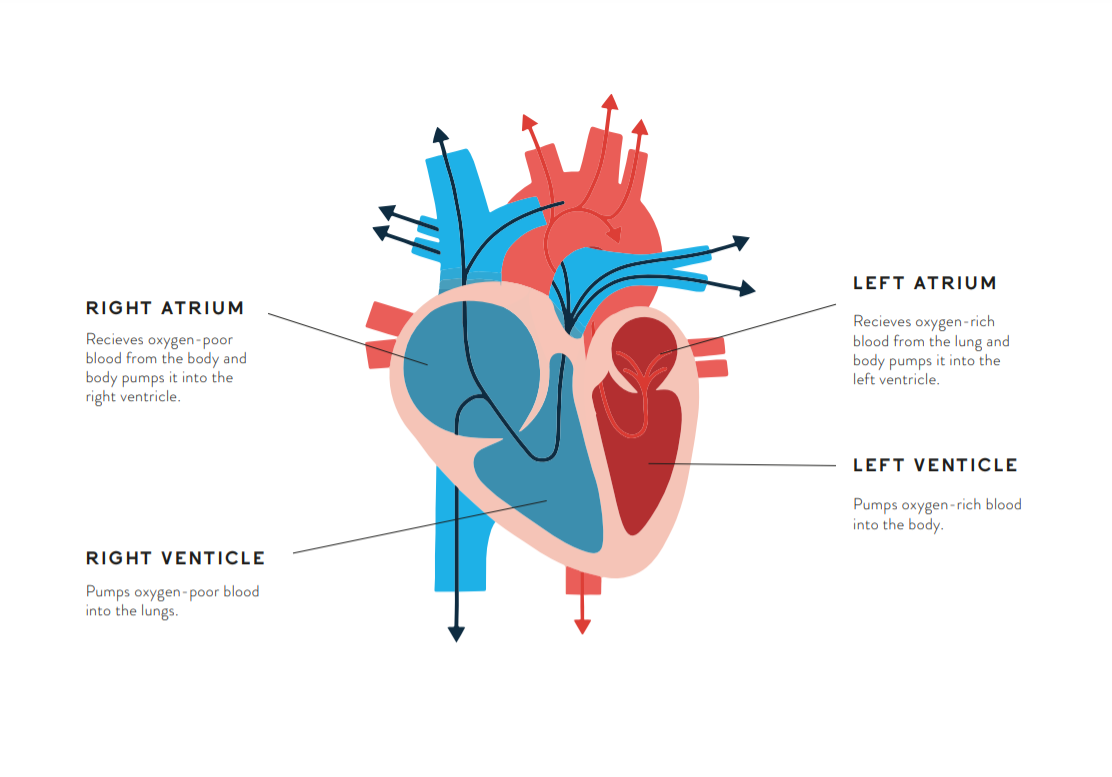How your heart works.
How it works
It can be quite difficult to understand the more technical aspects of how your heart works. In this section, we take a look at the processes involved, breaking them down and explaining the information needed for a basic understanding.
Roughly the size of your fist, your heart is located just left-of-centre in the middle of your chest. It is divided into two separate sides that both act as pumps. The left side of your heart (shown in red on the diagram) deals with oxygen-rich blood from the lungs, and the right side of your heart (shown in blue on the diagram) deals with oxygen-poor blood on its way back to the lungs. Each side has two chambers; an upper chamber, known as the atrium, and a lower chamber, the ventricle. Each atrium receives blood into the heart, and the ventricles pump blood back out again.
The human heart works like a pump sending blood around your body to keep you alive. It’s a muscle, about the size of your fist and will beat about 115,000 times and pumps about 2,000 gallons of blood every day.
Source - British Heart Foundation
Blood flows around your body continuously, in one direction. There are special ‘one-way’ valves in your heart, called the tricuspid and bicuspid valves; these prevent blood travelling back into the atria from the ventricles. Other valves are in place throughout your circulatory system, to help keep the blood flowing in the right direction.
Oxygen-rich blood from the left side of your heart is pumped around your body to your vital organs and muscles via your arteries. This same blood is then transported back to your heart, via your veins, to be pumped to the lungs to receive more oxygen.
Your heart is made up of two muscular pumps which circulate blood around the body. By your 70th birthday this fist-sized organ will have pumped more the 150 million litres of blood with 2,800,000,000 separate heartbeats. Each heartbeat pumps about half a tea cup full of blood in eight tenths of a second.
The Heart Beat.
A lot happens in a single heartbeat – it is amazing to think that the average person’s heart beats about 100,000 times a day! See below the stages of a single heart beat:
Stage 1.
Old blood enters the right side of the heart, ready to be pumped to the lungs.
Stage 2.
Fresh blood, which is oxygen-rich, enters the heart on the left side.
Stage 3.
The sinoatrial node (or SA node, also known as the pacemaker of the heart) sends out an electrical impulse, causing the atria to contract, pushing blood down into the ventricles.
Stage 4.
The atrioventricular node (AV node) sends an impulse to the ventricles, making them contract to push the fresh blood around the body and the old blood to the lungs.


